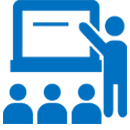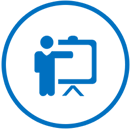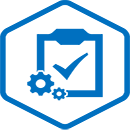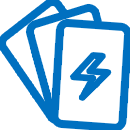Included in this course are the following two mandatory units:
Unit 1 : Child development from Conception to 7 Years
Unit aim : The aim of this unit is to provide learners with knowledge and understanding of child development from conception to seven years of age.
| Learning outcomes The learner will: |
Assessment criteria The learner can: |
|---|---|
| 1.Understand development from conception to birth and routine screening programmes in the first year of life. | 1.1. Describe stages of development from conception to birth. 1.2. Explain routine checks carried out during antenatal care, postnatal care and the first year of life. 1.3. Describe factors that may impact upon the development of the baby during :
|
| 2. Understand stages and sequences of development from birth to seven years. | 2.1. Identify stages and sequences of development from birth to seven years in the following areas:
2.2. Explain 'holistic' development. |
| 3. Understand theory and educational frameworks whichinform knowledge and understanding of Early Years practice. | 3.1. Describe theoretical perspectives in relation to:
3.2 Explain how theoretical perspectives relating to child development inform current frameworks. |
| 4. Understand the role of the Early Years practitioner when promoting child development from birth to seven years. | 4.1. Discuss the role of the Early Years practitioner when promoting child development in relation to:
4.2. Evaluate the role of the Early Years practitioner in supporting children's holistic development.
|
| 5. Understand how to plan opportunities for children’s learning and development from birth to five years. | 5.1. Plan opportunities for children from birth to five years in relation to:
|
Unit 2 : Children’s Health and Wellbeing
Unit aim : The aim of this unit is to provide learners with knowledge and understanding of children’s health and well-being from birth to seven years of age.
| Learning outcomes The learner will: |
Assessment criteria The learner can: |
|---|---|
| 1. Understand children’s needs in relation to emotional well-being. | 1.1. Explain the process of:
1.2. Summarise the role of the key personin promoting emotional well-being in relation to current frameworks. |
| 2. Understand the needs of children during transition and significant events. | 2.1. Identify transitions and significant events that a child may experience. 2.2. Discuss potential effects of transition and significant events on a child’s life. 2.3. Explain the role of the Early Years practitioner:
|
| 3. Understand the physical care needs of children. | 3.1. Describe the physical needs of children.
3.3. Explain the rest and sleep needs of:
3.4. Explain safety precautions which minimise the risk of sudden infant death syndrome. |
| 4. Understand the impact of the Early Years environment on the health and well-being of children. | 4.1. Describe factors within the Early Years setting which may impact upon the health and well-being of children. 4.2. Evaluate national and local initiatives which promote children’s health and well-being. 4.3. Analyse the role of the Early Years practitioner in maintaining a healthy environment for children. 4.4. Evaluate benefits of working in partnership with parents/carers in relation to children’s health and well-being. |
| 5.Understand the nutritional needs of children. | 5.1. Explain the nutritional value of the main food groups. 5.2. Identify the nutritional requirements of children aged:
5.3. Explain the role of the Early Years practitioner in meeting children’s individual dietary requirements and encouraging ealthy eating. |
| Understand the impact of poor diet on children’s health and well-being. | 6.1. Explain the impacts of poor diet on children’s health and well-being in the:
|
| 7. Understand children’s need for exercise. | 7.1. Explain benefits of exercise for children’s health and well-being. 7.2. Plan opportunities/activities for children to exercise. |















£495.00£325.00